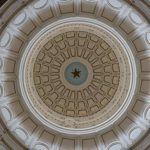TURIN, Italy (RNS)—As hoteliers and souvenir vendors from Lourdes to Mexico City can readily attest, a sacred pilgrimage can quickly morph from a spiritual event into a commercial bonanza.
And although religious tourism has recently become a booming global industry, it’s still rare for religious leaders themselves to sanction a pilgrimage for explicitly economic motives.
But the Shroud of Turin has always known how to draw a crowd.
|
Brock Kreitzburg takes a moment to read about the Shroud of Turin inside the Duomo Di San Giovanni Battista in Turin, Italy. (RNS PHOTO/Joshua Gunter/The Plain Dealer in Cleveland, Ohio)
|
The shroud, long venerated as the actual burial cloth of Jesus, was last displayed to the public in 2000. Its next exhibition wasn’t expected until 2025, in part to protect the shroud’s mysterious image—the front and back of a 5-foot-11-inch man—from the fading effects of light.
But when civic leaders in this automotive powerhouse sought to boost their crisis-stricken economy with an influx of tourism, the Roman Catholic Church was ready to help.
Turin’s Cardinal Severino Poletto, who maintains the relic on behalf of the pope in the Turin cathedral, agreed to a special six-week display this spring, which began April 10 and runs through May 23. Officials also hope to showcase other local attractions, including restored historic palaces and a cuisine gastronomes consider Italy’s most refined.
This unusual bit of economic stimulus already seems to be working. More than 1.5 million of the 2 million available free tickets to see the relic have been snatched up, and the city government says even the priciest hotels are booked solid for all weekends during the period.
Not all the visitors will be believers, of course. The church itself is officially agnostic on the shroud’s authenticity, which has been controversial among scholars since at least the 14th century, shortly after its first documented appearance. At the time, a French bishop complained to the pope the sheet was “cunningly painted by sleight of hand.”
Yet the shroud repeatedly has defied the attempts of scientists and other to prove it a fake. A widely reported series of carbon-14 tests made in 1988 indicated the fabric dated back no farther than the 13th century. But some experts now say that the testing methods used were inadequate, and repeated handling over the centuries may have contaminated the sample of fabric taken by scientists.
Sign up for our weekly edition and get all our headlines in your inbox on Thursdays
Moreover, no one has produced a convincing duplicate of the shroud’s image of a man’s body, or a satisfactory explanation of how it was made.
Archeologists and medical specialists say numerous details of the image conform to latter-day knowledge of the effects of ancient Roman crucifixion techniques—knowledge that would have been unavailable to medieval forgers.
No less intriguing is that the now-famous image of the shroud man’s bearded face, nuanced and strikingly realistic, was invisible until revealed in a photographic negative in 1898.
Visitors easily can reserve tickets on a multi-lingual website at www.sindone.org. A short digital film, shown in a tent outside the cathedral, prepares one for viewing by highlighting details of the image that might otherwise be unintelligible at first glance.
The relic itself is shown in an oxygen-free case behind two inches of bullet-proof glass, monitored by close-circuit TV cameras and a squad of plainclothes policemen spread throughout the cathedral.
However old the object in that case actually is, and however it was produced, it is apt to strike many who see it now as surprisingly modern. Glowing in the cool, low-intensity fluorescent light of two projectors, the subtle and symmetrical doubled image of a human body looks more like a high-tech diagnostic scan than an artifact of ancient Palestine or medieval Europe.
After waiting 90 minutes or more to get in, visitors have no more than a couple of minutes to take in the sight at a distance of 15 to 30 feet. There is no time limit for viewing from the cathedral nave, for which no ticket is required, but visitors there can get no closer than 80 feet from the shroud.
Even such a brief encounter seems to be worth the effort, however.
“It’s much more realistic and beautiful than I expected,” said Emiliano Babboni, 29, of Tuscany, just after leaving the cathedral. “Seeing it fills me with great emotion, great joy.”














We seek to connect God’s story and God’s people around the world. To learn more about God’s story, click here.
Send comments and feedback to Eric Black, our editor. For comments to be published, please specify “letter to the editor.” Maximum length for publication is 300 words.